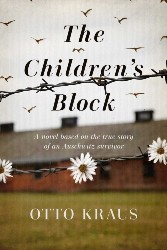While the setting of this novel is an actual trial of Nazi officers that took place in Frankfurt, Germany in 1963, the multi-layered plot is a total work of fiction. The trial was one of a series of trials known as the Auschwitz-Prozess, that ran from December 1963 to August 1965, charging twenty-two defendants for their roles in the Auschwitz-Birkenau death and concentration camp complex. The reader must be reminded that the testimonies of witnesses, responses of the defendants, and behavior of the prosecutors are all products of the author’s imagination. Eva Bruhns, the protagonist of the novel, recruited when the official Polish translator was not able to secure a visa, is challenged by revelations that ultimately incriminate her family.
Annette Hess, a well-known screenwriter for German television, creates a cast of characters reflecting the variety of reactions of the populace to the trials. As Eva becomes increasingly consumed by the trial and is assailed by vague memories connected to her family’s role in World War II, she encounters obliviousness, non-interest, boredom, resentment, suspicion and denial on the part of friends and family. Less than twenty years after the end of the war, these reactions reflect the overall post-war sentiment of ‘That was then, let’s move on.’
The most nuanced depiction is that of Eva’s father and mother, proprietors of The German House, a small restaurant serving basic German fare of stews, goulash and the like. Her father, Ludwig, and his wife, Edith, are simple, good-hearted people who, like many apolitical and uneducated Germans, were caught up in the war before they understood — if they ever did — what was happening.
Eva, in her role as translator, accompanies the prosecutors to Auschwitz, where her vague memories become clear. Many of the mysteries of behavior that have bewildered her are unraveled, and rapprochement with her family and with Jürgen, her suitor, becomes possible.
The narrative is hampered by the author’s obvious intention to conceal the identities of living persons by citing a prosecutor as “the blond man” or a defendant as “the Beast.” Implied also, is that the fictitious characters who do have names have flaws that, in some aspects, can be related to the events of the war.
While the plot is in need of editing and the translation often seems stilted, The German House should be read as yet another contribution to Holocaust literature that attempts, if not entirely succeeds, to comprehend obscene human behavior.





